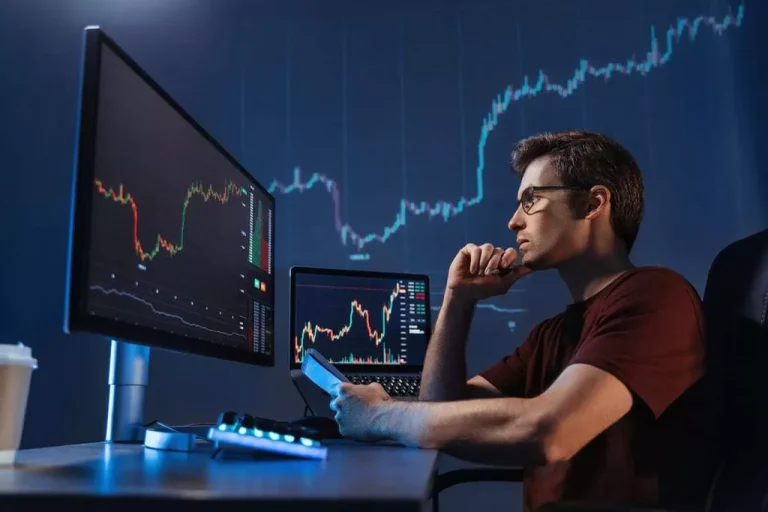What Is Slippage Tolerance In Crypto? How To Adjust Slippage Tolerance At Uniswap And Pancakeswap?
You can specify a scale factor to adjust the penalty stiffness, as discussed in Contact controls for general contact in Abaqus/Explicit and Contact controls for contact pairs in Abaqus/Explicit. In the default model the static friction coefficient corresponds to the value given at zero slip price, and the kinetic friction coefficient corresponds to the worth given on the highest slip price. The transition between static and kinetic friction is defined by the values given at intermediate slip charges.
Prominent centralized exchanges normally encounter less slippage than decentralized exchanges. Binance, as an example, routinely units slippage tolerance to zero.5% and in addition allows traders to adjust it manually. If the price movement during the execution course of exceeds the trader’s pre-defined slippage tolerance, the transaction could additionally be reverted to protect the dealer from unfavorable worth changes. While this mechanism can protect traders from excessive losses, it could additionally result in missed buying and selling opportunities. The best slippage price depends on every trader’s objectives and danger tolerance. Though zero.5% is the usual rate on most crypto exchanges, buyers should modify slippage tolerance according to their threat resistance earlier than buying and selling.

How Can I Handle Extreme Slippage While Trading?
These discrepancies happen because of several traits intrinsic to buying and selling in addition to some technical elements. When buying and selling crypto, the volatility in asset worth can create such a state of affairs the place the executed price is totally different from the quoted and anticipated value. Slippage is the anticipated % distinction between these intended and executed costs. Over the long term (if you’re an active trader) the effects of optimistic slippage and unfavorable slippage should even out for you. To keep forward, use limit orders, monitor liquidity, and set slippage tolerance. These tools will assist you to avoid slippage that might eat into your profits.
DEXs let you control tolerance settings, whereas CEXs usually hide slippage behind quick execution. If the ultimate execution price moves past that range, the commerce won’t go through. That method, you avoid getting crammed at a level you by no means agreed to. If you don’t manage slippage, sudden price changes will do it for you—and they don’t care about your strategy. As each chunk executed, the price slippage tolerance of WIF spiked—hitting $3 per token.
By the time your order executes, the asset’s value drops to $90, which you finish up getting. Since you acquired less than anticipated, the negative slippage could be https://www.xcritical.com/ $10 on this case. Merely put, the value slips after a trader initiates a commerce, so that they find yourself making (usually slightly) roughly than initially thought. Due to its complexity, the slippage in crypto varies between completely different blockchains and exchanges and even between other trading pairs inside the similar buying and selling platform. When a cryptocurrency dealer locations an order to buy or sell an asset, there may not be sufficient funds from counterparties to fulfill that order on the requested price immediately. In that case, the initial trader’s order (especially if it’s a big one) may be crammed by multiple other traders at different instances and prices.

Measure Of The Eccentricity Of The Scaling Ellipse
In extreme circumstances, a sufficiently massive buy-or-sell order can exhaust the entire market and generally still not end up completely fulfilled. Low slippage is normally a sign that the crypto market you’re trading is liquid, which is positive. A reasonable slippage tolerance would be set between 2% and 5%. In this buy example, slippage resulted in the next fill value. Let’s take a look at how the slippage tolerance calculator appears on the tastycrypto pockets.
Resetting The Frictional Properties To Their Default Values
- If the desired worth restrict is not reached, the commerce may stay unexecuted, inflicting the dealer to miss out on potential opportunities.
- These algorithms elevate or decrease token costs primarily based on provide and demand contained in the pool.
- Different parts to contemplate are exchanges and buying and selling platforms themselves.
- On the opposite hand, setting the next slippage tolerance may enhance the chances of successful commerce execution but may also expose traders to larger slippage charges.
- Thinly traded property with a large bid-ask unfold have higher odds of slippage as a result of there’s a major difference between purchase and sell prices.
- Returns are not guaranteed and should fluctuate over time relying on multiple factors, and you might lose your whole funding, particularly when utilizing leverage.
As the DeFi ecosystem continues to evolve, extra platforms are more probably to incorporate limit order performance, providing merchants with extra tools to manage slippage and optimize their buying and selling strategies. Slippage also can result in a phenomenon often recognized as “impermanent loss” for liquidity suppliers in DeFi protocols. Impermanent loss happens when the price of the assets in a liquidity pool adjustments as a outcome of market fluctuations, inflicting the worth of the liquidity provider’s share to briefly decrease. While impermanent loss isn’t immediately linked to slippage, larger slippage rates can exacerbate the effects of impermanent loss for liquidity suppliers.
Below yow will discover the method to change the slippage tolerance for Uniswap and Pancakeswap. Slippage can shortly become a frustratingly slippery slope for the less skilled dealer, so it’s necessary to understand the volatility of cryptocurrency. When you set your slippage tolerance, your provider will fill as much of your order as possible (sometimes not all for large orders) while staying inside the value bounds that you’ve specified.
Minswap offers the flexibility to set the swap slippage tolerance to limitless, allowing customers to process orders even in risky market conditions. However, it’s crucial to train warning when utilizing this characteristic, because it carries the risk of great price motion between the affirmation and execution of a commerce. Most decentralized exchanges permit merchants to set slippage percentages for each commerce, often offering preset values like zero.1%, 0.5%, and 1%. Since they often have less liquidity than centralized exchanges, participants are often accustomed to higher Proof of personhood slippage.
These price swings may end up in closed trades at unintended costs, resulting in both income or losses for merchants. When crypto traders pay more or less than the anticipated price, they experience a phenomenon known as “worth slippage.” Conversely, negative slippage arises when a commerce is executed at a worse value than supposed.
If the specified price restrict isn’t reached, the trade may remain unexecuted, inflicting the dealer to overlook out on potential alternatives. Thus, merchants should fastidiously consider their price limits and monitor market circumstances to strike a balance between slippage management and trade execution. The orientation of the important contact shear stress for this friction model evolves with the native tangent instructions of the contact interplay, which are discussed in Native tangent instructions on a floor.
It’s widespread in crypto trading, especially when markets move quick or liquidity is low. Whether Or Not you’re utilizing a decentralized change or a top-tier platform, slippage can cost you—or save you—money. Understanding the method it works helps you commerce smarter and avoid costly errors. Developing a customized slippage algorithm usually requires programming abilities and a deep understanding of the DeFi ecosystem, including the mechanics of decentralized exchanges and liquidity pools. Merchants can create customized algorithms utilizing languages similar to Solidity, Vyper, or Python and interact with DeFi platforms by way of their APIs or sensible contract interfaces.
Using limitless slippage should be carried out with warning, as it may lead to surprising losses if the market experiences significant price actions in the course of the transaction affirmation and execution period. It’s essential to adjust your slippage tolerance primarily based on the precise buying and selling pair, market conditions, and your danger tolerance. Hold in mind that you may want to switch the slippage setting as market conditions change or when switching between different trading pairs. To handle slippage, customers can set a slippage tolerance, which is the utmost allowable price distinction between the expected and executed worth. If the slippage exceeds the set tolerance, the transaction is not going to be executed, preventing extreme losses as a end result of unfavourable value modifications.
0 comments on What Is Slippage Tolerance In Crypto? How To Adjust Slippage Tolerance At Uniswap And Pancakeswap?